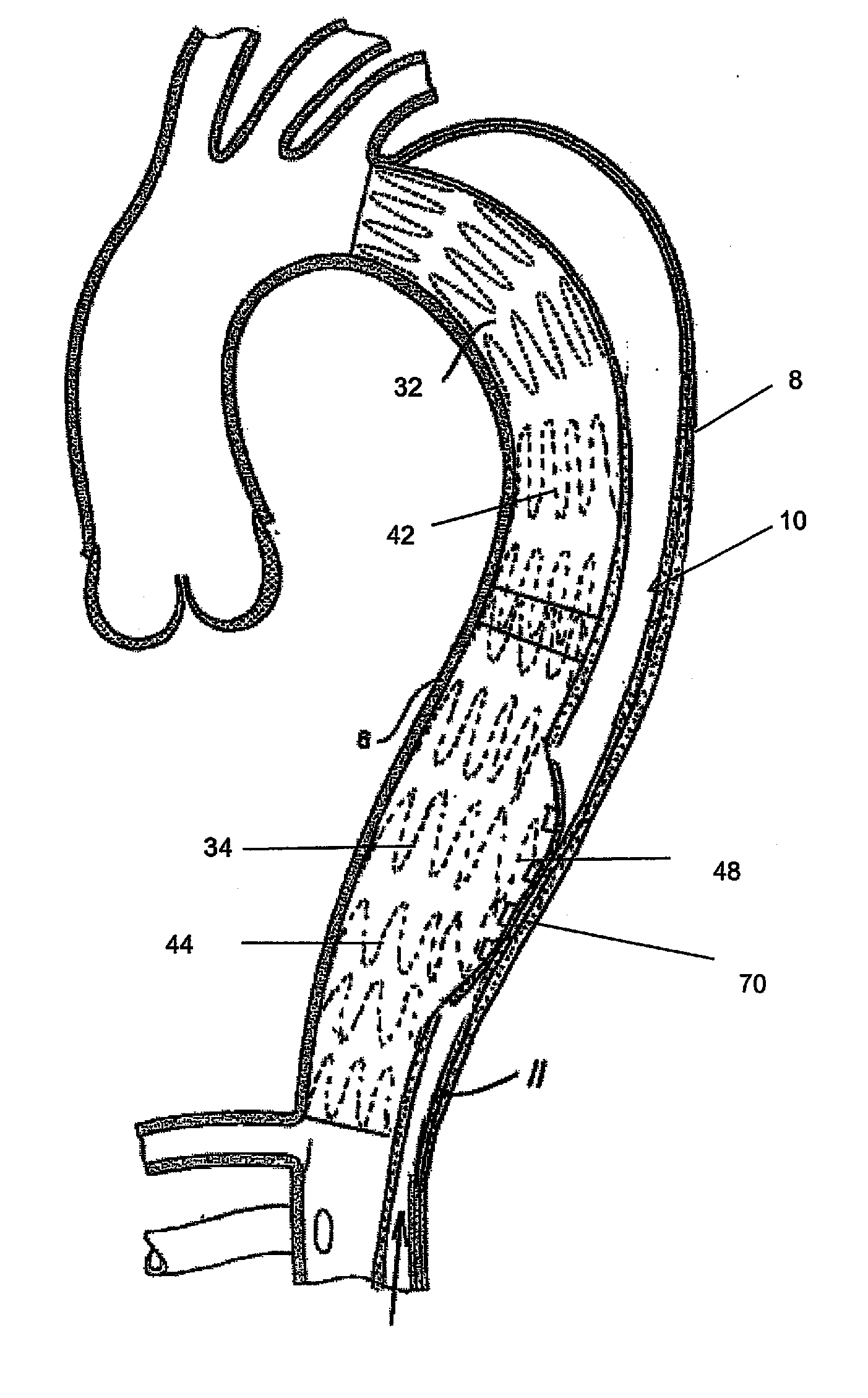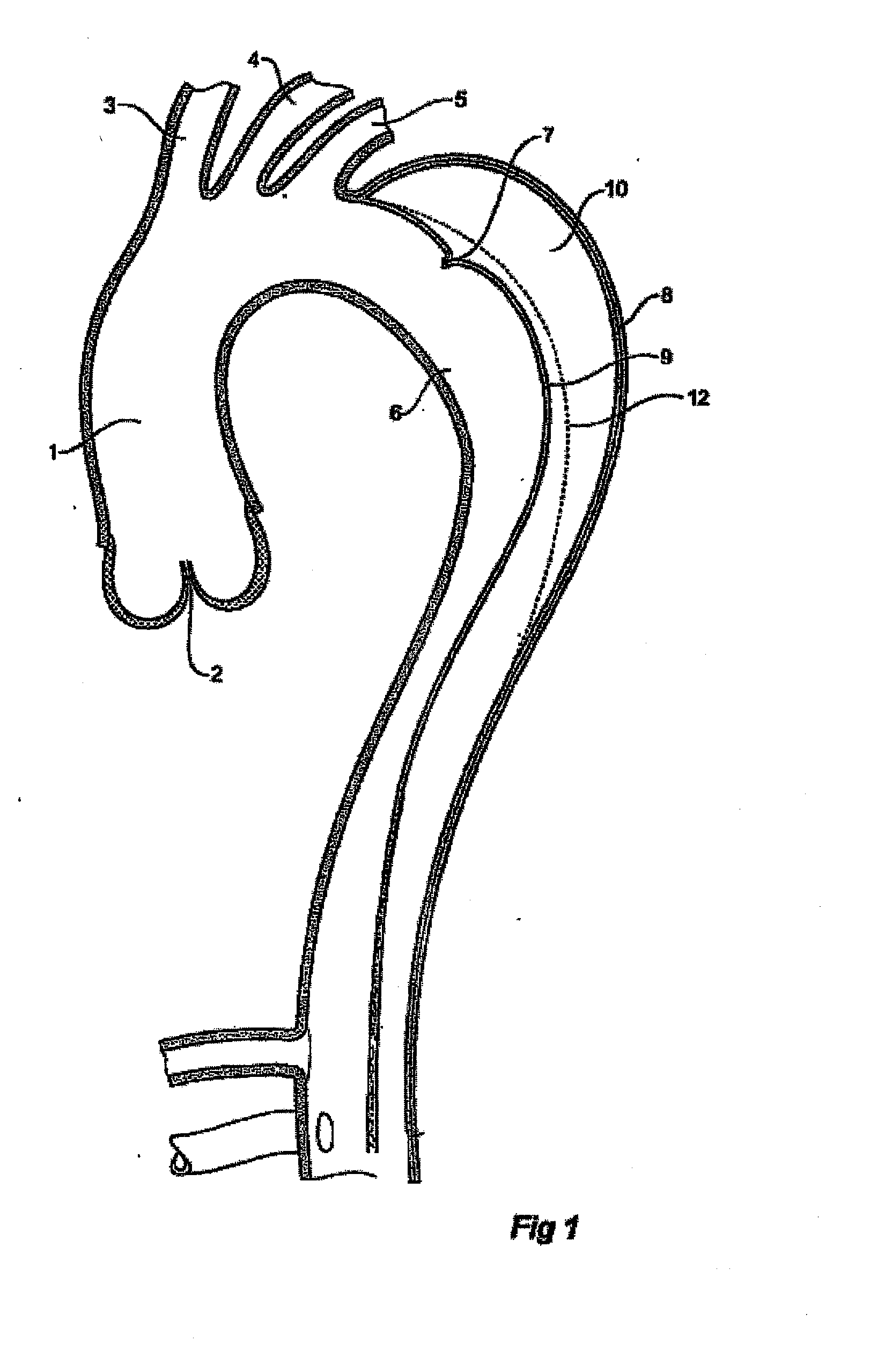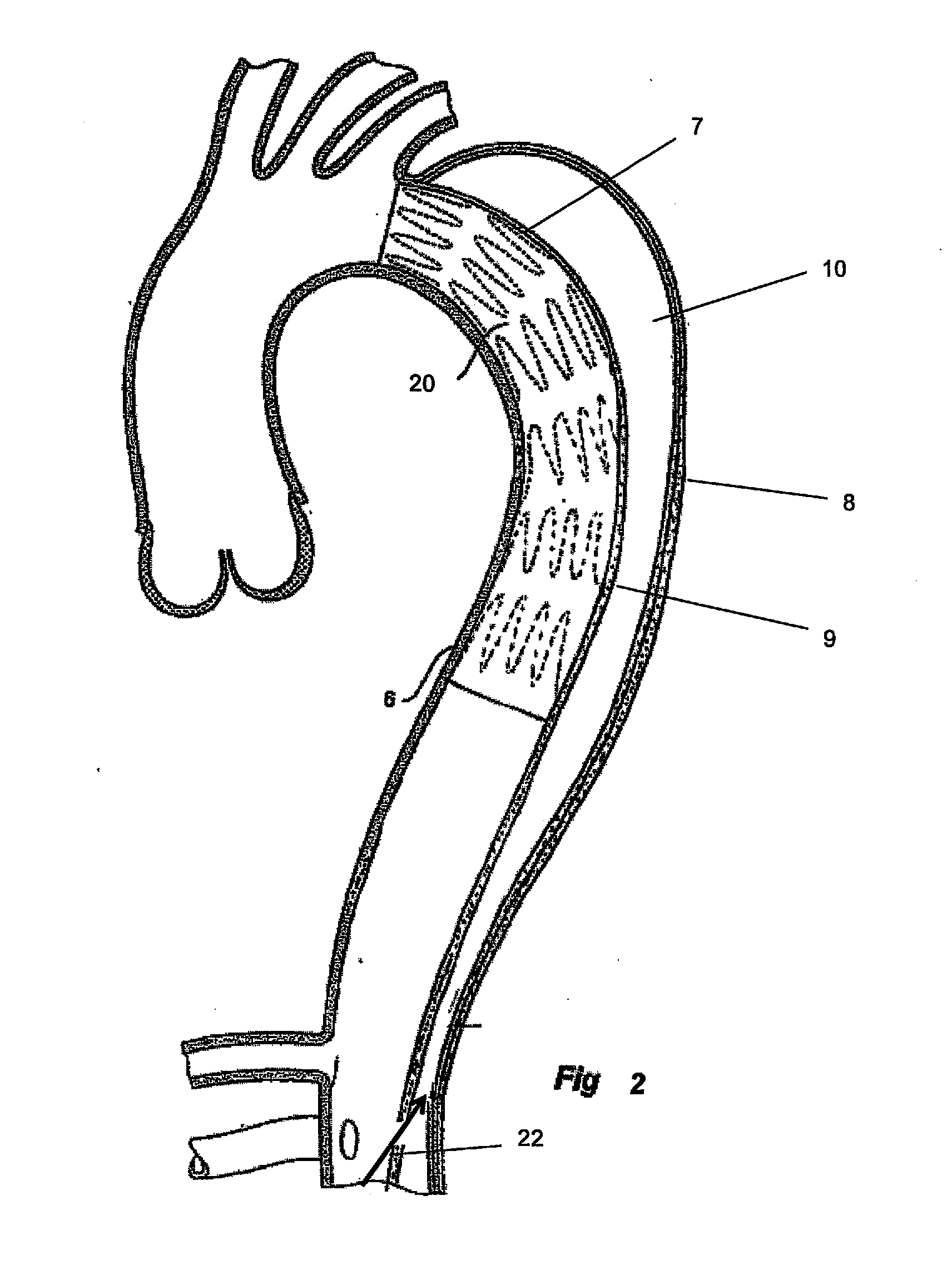Device and method for treating vascular dissections
a technology for aortic disease and a kit is applied in the field of aortic disease devices, kits and methods, which can solve the problems of less likely to achieve the remodelling of the vessel wall, increased risk of false lumen aneurysm, so as to improve the ability to press fals
- Summary
- Abstract
- Description
- Claims
- Application Information
AI Technical Summary
Benefits of technology
Problems solved by technology
Method used
Image
Examples
Embodiment Construction
[0053]Throughout this specification the term proximal with respect to both human or animal vasculature will be used to refer to the region closest to the heart and similarly that part of the implantable medical device or prosthesis which when in use is closest to the heart; while the term distal will be used for regions of the human or animal vasculature further from the heart and similarly those parts of the implantable medical device or prosthesis which in use are further from the heart. With regard to the deployment or introducer assembly, the term distal is also used to denote the part of the assembly which remains closest to the clinician during the medical procedure, and typically outside the patient, while the term proximal is also used to denote the end of the assembly which is furthest from the clinician and which is first fed endoluminally into the patient's vasculature, in practice to be closest to the heart.
[0054]The embodiments described below are in connection with a d...
PUM
 Login to View More
Login to View More Abstract
Description
Claims
Application Information
 Login to View More
Login to View More - R&D
- Intellectual Property
- Life Sciences
- Materials
- Tech Scout
- Unparalleled Data Quality
- Higher Quality Content
- 60% Fewer Hallucinations
Browse by: Latest US Patents, China's latest patents, Technical Efficacy Thesaurus, Application Domain, Technology Topic, Popular Technical Reports.
© 2025 PatSnap. All rights reserved.Legal|Privacy policy|Modern Slavery Act Transparency Statement|Sitemap|About US| Contact US: help@patsnap.com



